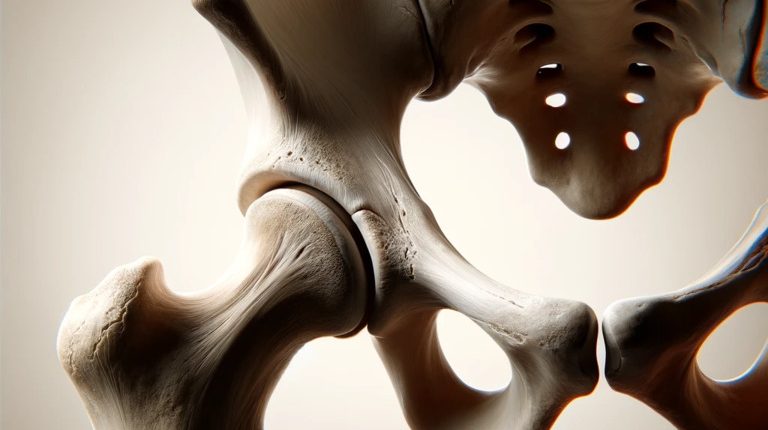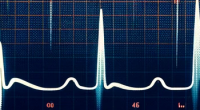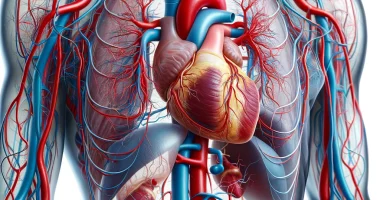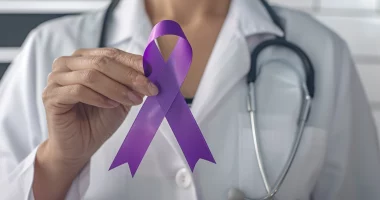Aseptic necrosis of the femoral head
What is avascular necrosis (AVN) of the femoral head?
AVN is a severe disease of the musculoskeletal system, characterized by the destruction of bone tissue in the femoral head, breaking the hip joint’s function. To date, no radical treatment has been developed for the pathology. However, adequate medical treatment will slow the destructive progression of the bone tissue. Without treatment, aseptic necrosis of the hip leads to disability of the patient.
Types of disease
Aseptic necrosis of the femoral head is more common in people aged 35-55 years. Classification of the disease based on the nature of the bone lesions. There are two main types of AVN:
- medullary. In this case, there is a lesion in the canal that runs inside the bone with the gradual destruction of its structure;
- cortical. This disease variant is manifested by the involvement of the joint in the process. In addition to bone tissue, cartilage is destroyed, which significantly interferes with the function of the hip joint.
AVN is also classified according to the severity of symptoms into mild, moderate, and terminal stages of the pathological process.
Symptoms of aseptic necrosis of the femoral head
The main pathogenetic pathway of this disease is the gradual destruction of bone tissue. The primary symptom that occurs in all patients is pain in the affected area. It can vary in intensity depending on the stage of the pathological process.
In addition to pain, patients often notice:
- claudication;
- visual reduction of the muscles affected by the joint area;
- limitation of free movement of the affected hip joint.
These symptoms may not be very expressed in the early stages of disease development. However, this should not be a reason to delay a visit to the orthopedist. If you do not seek specialized help in time, the disease will progress, and irreversible bone destruction will develop. Proper treatment can significantly slow the progression of the disease and improve the patient’s quality of life.
Causes of aseptic necrosis of the femoral head
In 45-55% of cases it is impossible to identify causative factors of the disease. Therefore, the process is often referred to idiopathic. Most researchers agree that the primary pathogenetic mechanism of the disease is the reduction in the blood supply to the bone. As a result, the delivery of nutrients to cells and tissues deteriorates, leading to their gradual death.
Factors that increase the risk of developing avascular necrosis include:
- hematological diseases that break the normal process of clotting (idiopathic thrombocytopenic purpura, hemophilia);
- long-term use of glucocorticoids;
- alcohol and drug abuse;
- chronic diseases of the musculoskeletal system;
- abnormalities in the development of blood vessels in the microcirculatory bed;
- metabolic disorders (diabetes, gout);
- systemic connective tissue diseases – systemic lupus erythematosus, rheumatoid arthritis;
- radiation exposure.
Traumatic injuries to the lower limbs and constant physical exertion are considered possible triggers of the disease. However, there is still insufficient conclusive evidence to support this theory of disease development.
Diagnosis of avascular necrosis
The diagnosis of aseptic nectosis is based on a thorough analysis of the patient’s complaints and medical history. During the consultation, the orthopedist examines the affected joint, evaluating its condition and the degree of dysfunction.
To confirm the diagnosis, your doctor will use the following instrumental examination methods:
- X-ray imaging of the affected joint;
- computed tomography (CT) scanning;
- magnetic resonance imaging (MRI).
The information is used to determine the approach to treatment a particular patient is prescribed.
Methods of treatment for femoral head aseptic necrosis
In the early stages of the pathological process, medical treatment is carried out. In later stages, femoral head replacementmay be indicated.
Conservative treatment
In the early stages of AVN, conservative treatment is used. It aims to slow down the processes of bone destruction and improve the patient’s quality of life. For this purpose, the orthopedic surgeon uses the following tools:
- painkillers;
- treatment methods to improve microcirculation and delivery of nutrients to the damaged area of bone;
- therapeutic exercises for joint development;
- physiotherapy.
Surgical treatment of aseptic necrosis of the femoral head
At some point, the conservative approach is ineffective due to the pronounced destruction of bone tissue. In this case, the only treatment option is surgery to replace the affected joint. Its essence is to install an artificial femoral head that completely replaces the destroyed one. It allows almost complete restoration of the function of the hip joint. Here’s the most common surgical procedures, that are usually done for AVN:
- Osteotomy. In cases where the femoral head has started to collapse, a surgical procedure known as an osteotomy may be recommended. An osteotomy involves cutting and repositioning the femur to relieve pressure on the affected area of the femoral head. This realignment helps distribute weight more evenly across the hip joint and can delay or prevent the need for a total hip replacement.
- Vascularized bone grafting. vascularized bone grafting is a complex surgical technique that involves transplanting healthy bone tissue, along with its blood supply, to the necrotic area of the femoral head. This procedure can help restore blood flow and promote the healing and regeneration of bone tissue. Vascularized bone grafts are often sourced from the patient’s own body, typically from the fibula or iliac crest.
- Total hip replacement (THR). Total hip replacement is the most definitive surgical treatment for advanced femoral head AVN. In this procedure, the damaged femoral head and hip socket are removed and replaced with prosthetic components. THR not only relieves pain but also restores hip joint function, allowing patients to regain mobility and engage in their daily activities with reduced discomfort.
- Resurfacing hip arthroplasty. Resurfacing hip arthroplasty is a less invasive alternative to total hip replacement. It involves removing only a thin layer of the femoral head and capping it with a metal prosthesis. This preserves more of the patient’s natural bone and may be an option for younger individuals with AVN who want to delay a full hip replacement.
Aseptic necrosis of femoral head can be treated in 600 hospitals across the world. (https://doctor.global/results/diseases/aseptic–necrosis-of-hip). For example, total hip replacement is performed in 24 clinics in Turkey for approximate price of $12.6 K. (https://doctor.global/results/asia/turkey/all-cities/all-specializations/procedures/total-hip-replacement-unilateral)
Prevention of aseptic necrosis of the femoral head
There is no specific prevention of AVN. Due to the lack of researchers’ complete understanding of the mechanisms of disease development, it is quite challenging to develop a set of measures to prevent pathology. In this case, orthopedists recommend avoiding injuries to the lower limbs, treating any disease of the internal organs promptly, having a balanced diet, and regularly undergoing preventive examinations for early detection of a potential medical problem.
Rehabilitation after surgery
Surgical treatment of AVN involves replacing a joint with a prosthesis. After surgery, the patient remains in hospital for 1-2 weeks under the constant supervision of orthopedists. The operated limb is immobilized. The doctor will perform dressings daily and monitor the patient’s well-being. The patient is prescribed a preventive course of antibiotic therapy to prevent bacterial complications. To eliminate discomfort, the patient takes pain medication.Before discharge, the podiatrist will teach the patient how to behave properly in everyday life. An individualized rehabilitation plan is developed for the quickest possible recovery of joint function. Stitches are removed between the 14th and 21st day after surgery. Full recovery can take up to 3-6 months. At this time, you will need to avoid physical exertion, eat well, and rest more.




